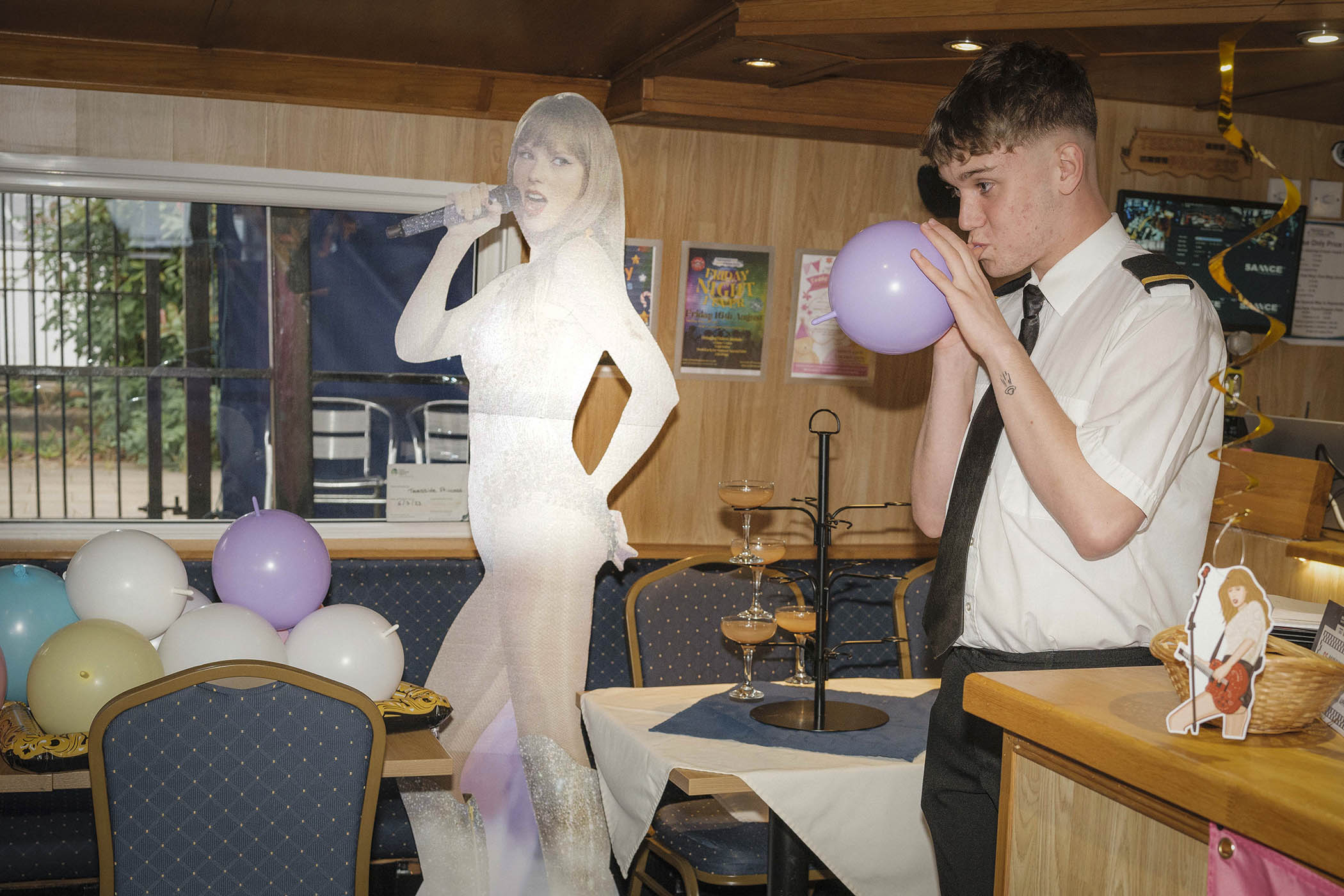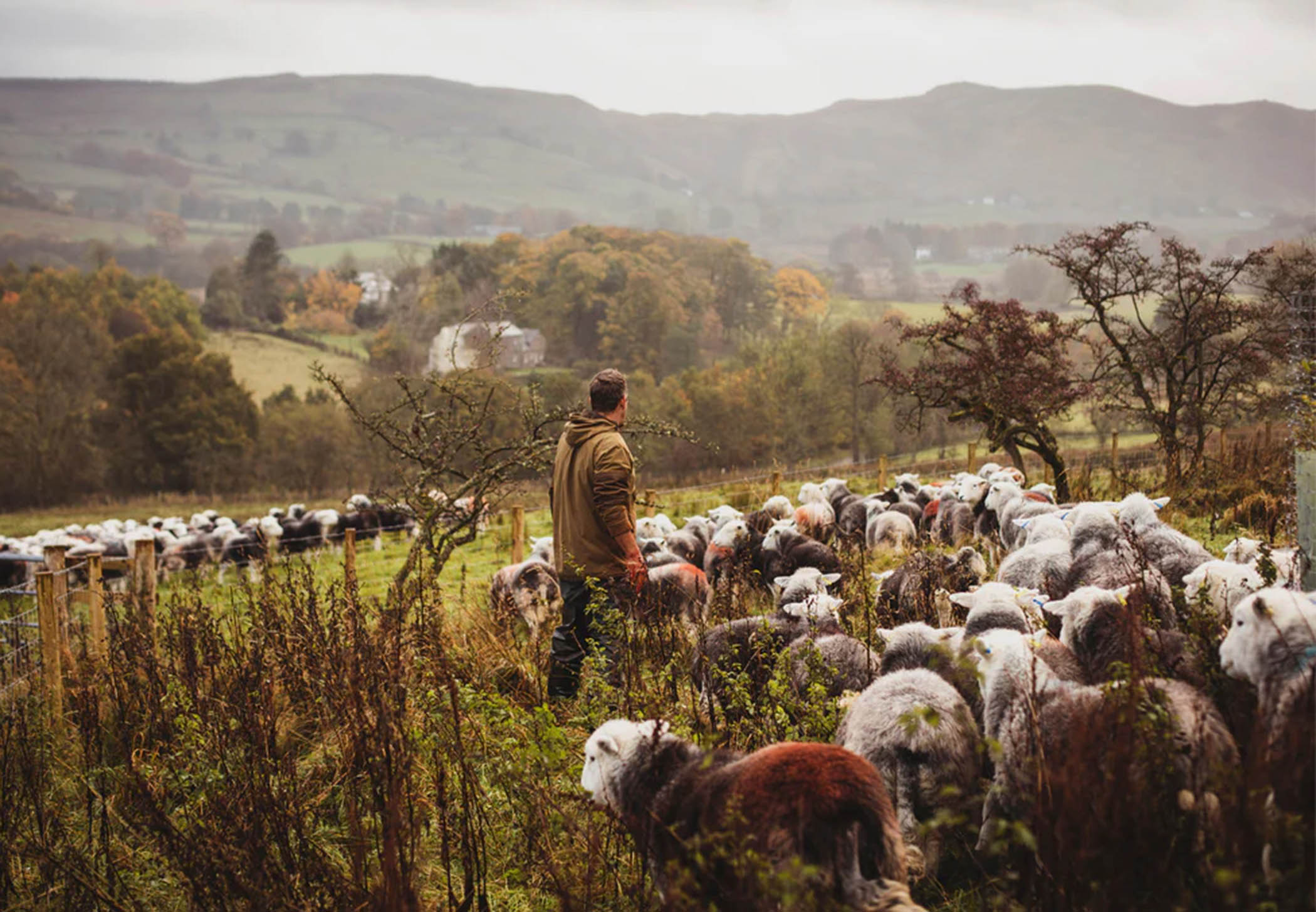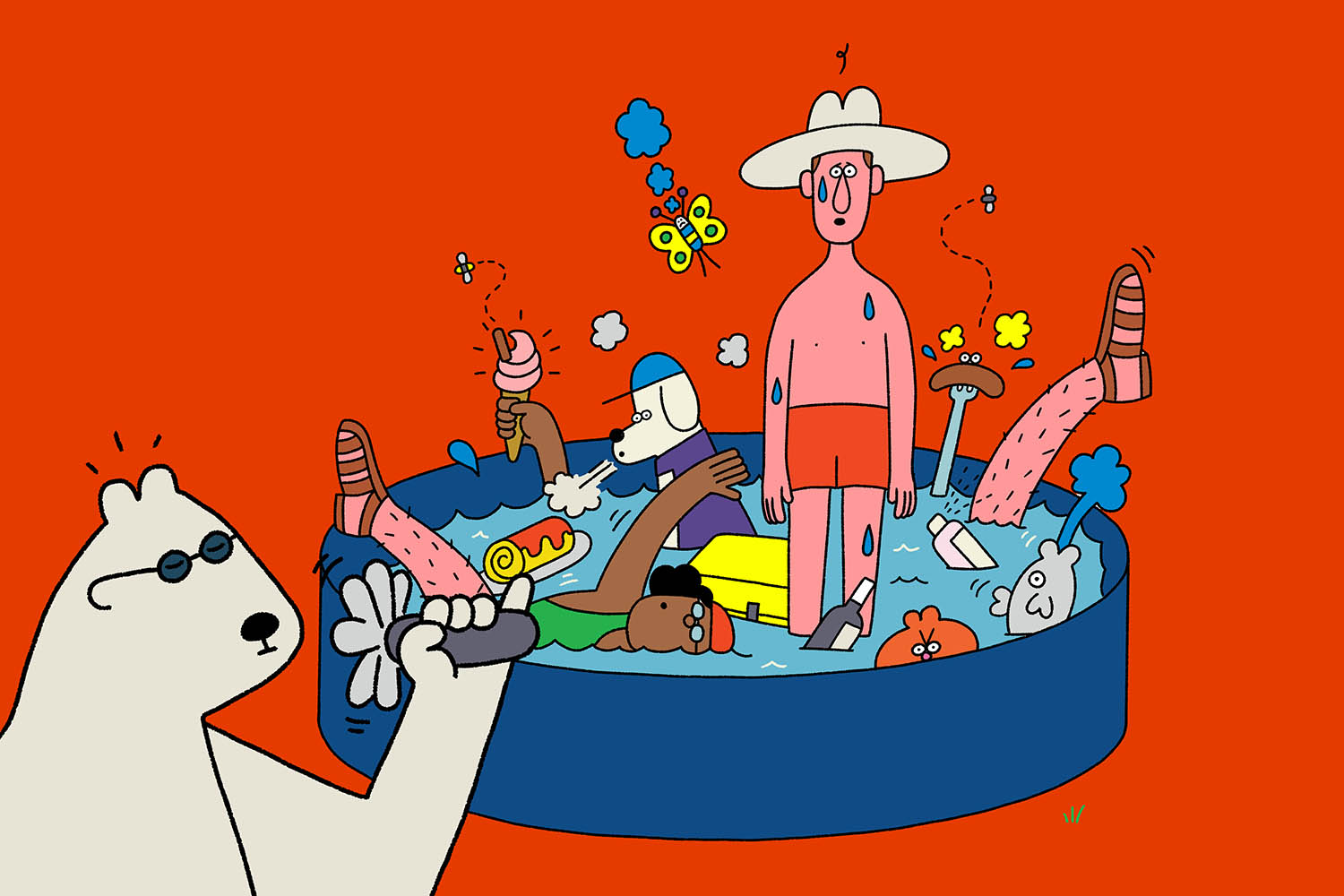
As the scorching summer rolls on, here are 100 ingenious ways to stay chilled
Edited by Matt Alagiah
Illustrations by Leon Edler
Already it feels like it’s been a long hot summer. We’ve sweated through not one but three heatwaves: stifling commutes, fans on overdrive, damp bed sheets, recurring daydreams of plunging into an icy pool. And we’re not yet even in August…
With our summers becoming increasingly steamy, we need to start thinking seriously (and a bit unseriously, too) about cooling everything down: our buildings, our bodies, even our brains. Here we offer a bumper guide of tips for keeping your home chilled, suggestions for what to wear, and recommendations for what to eat and drink when the mercury rises. We also speak to the experts – from the woman tasked with stopping our cities from boiling to the researcher who helps athletes avoid severe heat stress. As one of our interviewees put it, we’re entering “a new climate era, when it’s going to be much hotter”. And in that new era, we’re going to need a lot of new ways to keep cool – 100, to be precise.
01. Consider a heat-resilient city
Eleni Myrivili holds the deeply cool title of Global Chief Heat Officer at the Atlantic Council’s Climate Resilience Center. She works closely with the UN to develop heat resilience in cities. Interview by Matt Alagiah
Q: What does a Chief Heat Officer do?
A: We figure out how to protect the most vulnerable people in the city during heatwaves. What policies and initiatives can we put in place so people don’t lose their lives? The secondary task is long-term cooling. How can we make our cities cooler and ensure people can live, work and survive in the new climate era, when it’s going to be much hotter?
Related articles:
Q: Explain what the “heat island effect” is?
A: It’s the difference between the densely built-up centre of a city and its outskirts. This isn’t a small difference – in some cities, it can be as much as 12C. The hard surfaces in cities absorb the sun’s heat throughout the day and then release it at night. Bodies, cars and air conditioners all contribute to the heat. There is also less air movement in cities, which leads to hot air being held in place.
Q: So, what can our cities do to stay cool?
A: Water has a dramatic ability to cool cities and one thing a lot of cities are trying to do is reintroduce “daylight” rivers that had previously been buried beneath the streets.
02-06. Wear a good sun hat
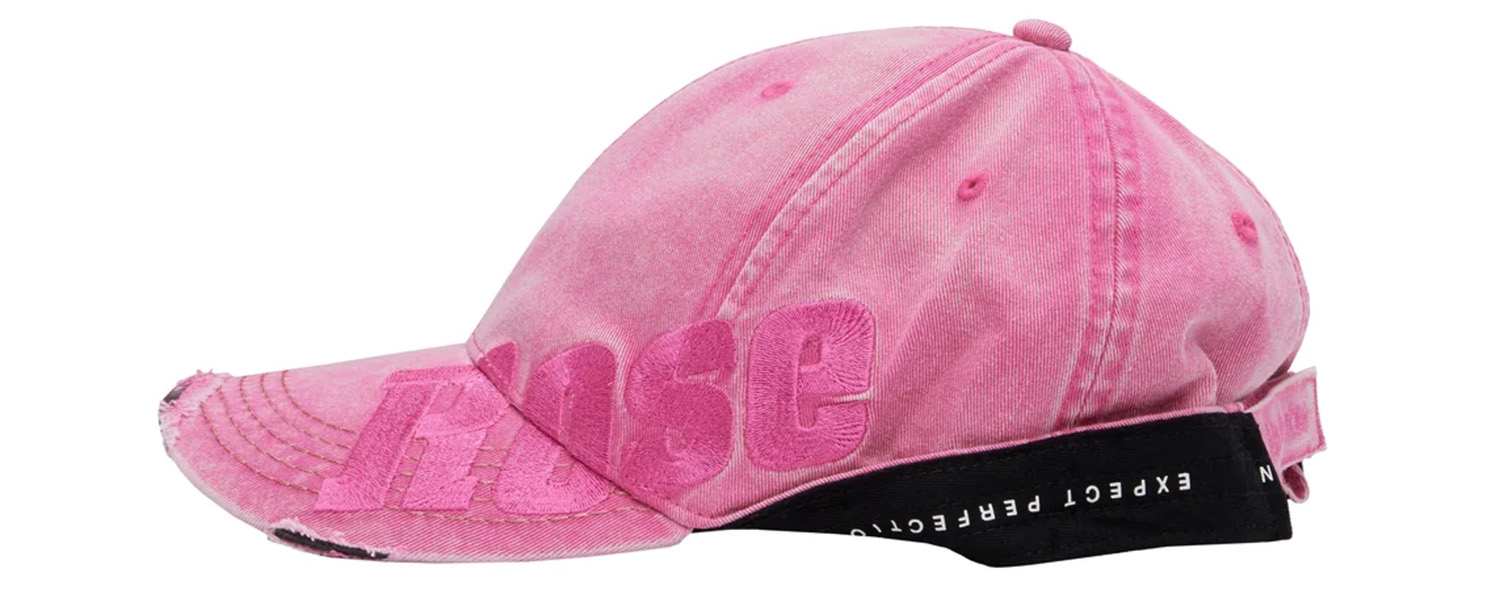
Gingham reversible £25, John Lewis
Pink cap £190, Martine Rose
Brown canvas £130, Jacquemus (End Clothing)
Red bucket hat £32, Free People
Two-tone £70, Oas Company
07. Don’t panic (about the coming apocalypse)
By Tom Phillips
It’s hard to escape the feeling that the world is on fire. That’s partly because… well, significant bits of it are, in fact, on fire. Hot words, hot wars, hot zones: everywhere the metaphorical temperature is rising, along with the actual temperature. So how can we keep calm when it feels like the world could burn down tomorrow?
Perhaps we can take comfort in the fact that we’re far from the first generation to feel the apocalypse is around the corner. People faced with crises have been confidently predicting the end of the world for thousands of years. And (spoiler alert) none of them have been right – yet.
When radical Anabaptists seized control of Münster in 1534, it was because they expected Judgement Day before the year was out. When people gathered in a suburban Chicago backyard in 1954, it was because they expected aliens to arrive and rescue them from an imminent flood. During the Cold War, you could barely move in Montana for different sects and cults building bunkers in preparation for Armageddon. Admittedly, the fact that prophets of doom have consistently been wrong before doesn’t mean they always will be. But there’s a more compelling reason to avoid apocalyptic thinking than simply being wrong: most of the time, it actually makes things worse.

When the world stubbornly keeps existing longer than you expected, you’re in trouble. Many apocalyptic believers left jobs, sold their worldly goods and severed personal ties in order to prepare for the end, only to be left high and dry. Meanwhile, the conviction that total doom is imminent often distracts from smaller-scale crises you actually could have done something about. Despair is a bad motivator.
Ultimately, building the future is always a collective effort – but the apocalypse is the ultimate in polarisation. There can be no common cause between those who expect tomorrow to arrive and those who don’t. So yes, the failure of doomsayers past is a comfort – but so is the resilience of all those humans who lived as though they expected a new day to dawn, and who today keep a cool head as temperatures soar.
Tom Phillips is the author of four books, the most recent of which is A Brief History of the End of the F*cking World, published by Wildfire
08-12. Swim at a tidal pool
By Genevieve Fox
Half human, half nature’s glory, a semi-natural tidal pool offers a magical, even numinous swim, one that keeps you tethered to the land but lets you in on the freedom of the ocean.
Man-made granite structures and the Atlantic’s vastness merge in Bude’s semi-natural tidal pool on a vast and sandy beach in North Cornwall and in Cellardyke tidal pool in Anstruther, a fishing village with bijou bells on in Fife, Scotland.
All-out sybarites prefer a luxe lido, though, and there is none more bathing-beauty fabulous than Sussex’s Saltdean Lido. This renovated Modernist gem has a crescent-shaped main pool (heated, but don’t tell) and curves that call to you like a showstopper liner on the open sea.
The wild at heart prefer unguent river swimming. For Londoners, slipping into the Thames at Pangbourne Meadow in Berkshire’s Chiltern Hills, half an hour from the capital, is a visceral experience, by all accounts, one that must, at some primal level, connect them to their lobe-finned forebears.
But the Thames is a mean muscle of a river, to be entered with caution. I prefer a tame, narrow river with a far bank a few strokes away or, better still, some pools to jump into. I like the sound of Derbyshire’s Three Shires Head on Axe Ridge Moor on the River Dane. It has three small pools and two waterfalls to swim in – a mermaid’s delight.
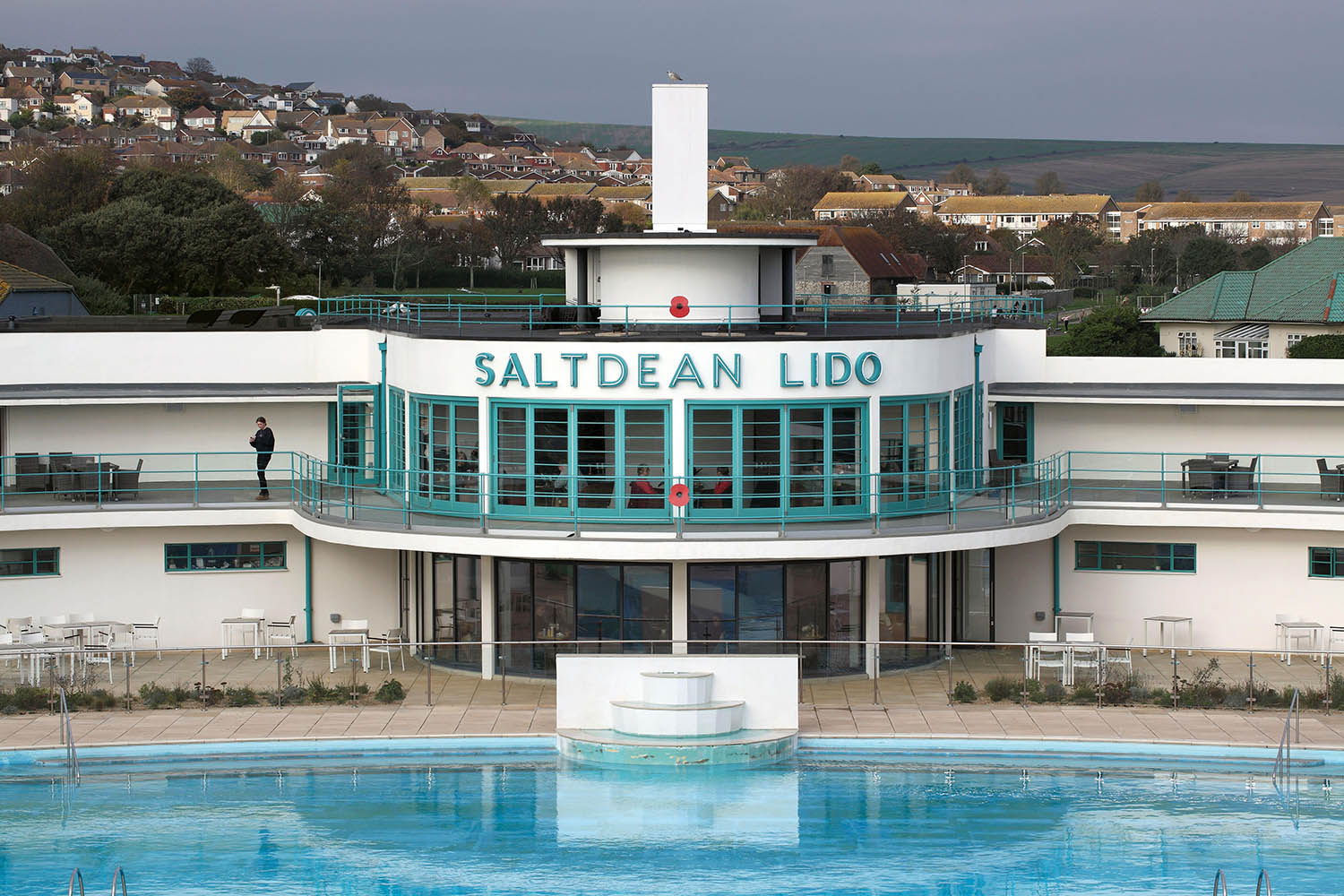
Bathing beauty: Saltdean Lido, near Brighton, East Sussex.
13-16. Cooling tips
Spray your drapes
The Ancient Greeks hung wet rags in front of windows to cool their homes. It’s a process called ‘evaporative cooling’ and the same effect can be achieved by spraying your curtains with water.
Rethink the pint
Brits have been known to curse the sight of a pint with too tall a head, but this layer of froth can actually act as a thermal buffer, keeping the beer inside the glass cooler for longer.
Try frozen fruit
Freeze peaches and nectarines, then use a grater to shave the frozen fruit on to yoghurt for a delicious dessert.
Create your own A/C
Domestic air conditioning might not be common in the UK, but if you place a bowl of ice in front of a standard fan, it’ll feel a bit like an A/C unit.
17-26. Build your summer-gal wardrobe
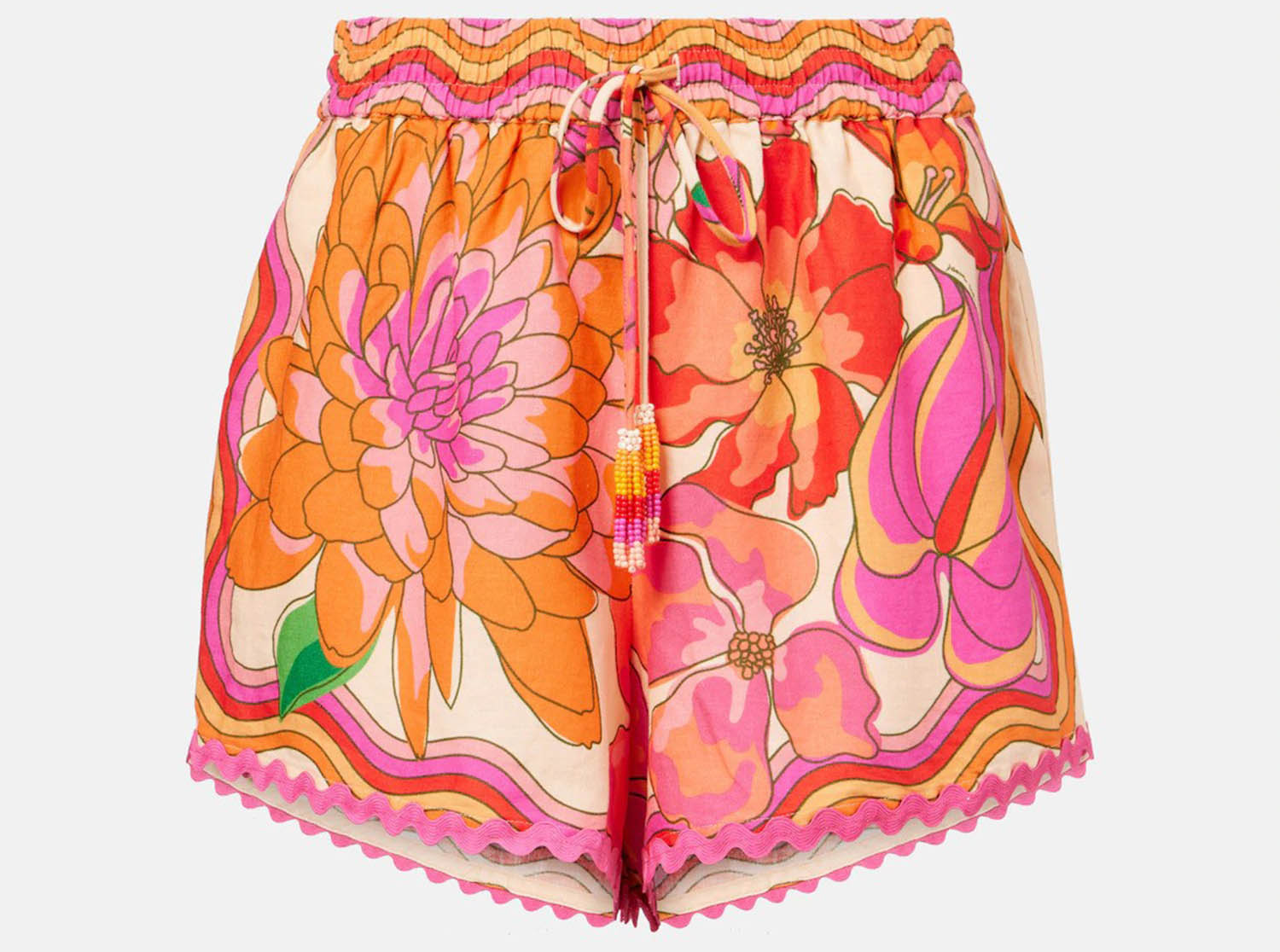
Linen-blend shorts £150, Farm Rio (pictured)
Loose cover-up £38, Next
Cotton-poplin shirt dress £289, La Ligne (Net-a-Porter)
Cool Comfort moisture-wicking slip £20, M&S
Insulated tote £44.95, Black + Blum
EVA Sandals £50, Teva
Fluid trousers £157, Me + Em
Swimsuit £175, Hunza G
Embellished sandals £125, Birkenstock
Oxford shirt £110, With Nothing Underneath
27. Learn from professional athletes
Dr Barney Wainwright is a senior research fellow at the Carnegie School of Sport at Leeds Beckett University. He provides heat-acclimation training for athletes competing in extreme temperatures. Interview by Hayley Myers

Q: Why do athletes need to train for heat?
A: When athletes compete in a cool environment, their core temperature increases, then naturally returns to normal. If it’s hot, that process is more difficult, which can lead to dehydration.
Q: What happens in the lab?
A: Sensors are fixed to the body, a soft rectal probe is self-administered, then the athlete uses a treadmill or exercise bike for up to 60 minutes in a chamber designed to maintain temperature and humidity at 40C.
Q: And what happens to the athlete’s body?
A: Once the core temperature has increased by up to 1.5C, the body’s responses are closely monitored. Typically, after five or six sessions there’s an improvement: core temperature and heart rate reduce; sweat volume increases.
Q: What single tip would you give the average person to cope in a warmer world?
A: It seems oxymoronic, but to stay cool, turn the air conditioning off. Spend time getting deliberately (and safely) hot to acclimatise.
28. Learn how London once sourced its ice
By Martin Sach
Ice has been gathered for centuries in England from ponds, rivers and lakes. In London in the 1800s, winters were harsher, so ice was gathered from the Regent’s Canal. Throughout the 19th century, however, as London and other cities expanded, people couldn’t source enough ice. So they started importing it.
Swiss immigrant Carlo Gatti brought in pure and plentiful ice from the Norwegian mountains in the 1860s. The main ice harvest was in the spring. Ships came across the North Sea and into the Regent’s Canal Dock, where the ice was transferred on to canal barges and then to wells in places like King’s Cross. The ice was packed tightly and could be stored for months at a time.
There was a lot of demand, for storing fish, meat and dairy products, and also for use in hospitals – before anaesthetics were widely available, ice was used to help ease the pain of amputations and for the relief of inflammation. Middle-class houses would also often have an icebox, a wooden chest where you would store your butter and milk. The “ice man” would let himself in each day to top it up.
At the end of the 20th century, it became possible to make ice locally through a chemical process. The last recorded import of ice was in 1921, ending a chapter in British history when ice from the fjords chilled our G&Ts.
Martin Sach is chair of the London Canal Museum in King’s Cross
29. Increase your bed real-estate
By Séamas O’Reilly
Our bedroom faces directly into the sun, so it traps warmth like a Fray Bentos pie tin and no number of open windows can ever cool it down. We have a fan, of course, but for the past five weeks it’s done little more than pelt our prone bodies with something like the air that comes out the back of a PlayStation 3.
Bed-sharing, then, is a further nightmare, but one that can be remedied. The best advice I can give any person, for any reason, is to buy a super-king bed. We bought ours three years ago, and we love it in a manner that’s unseemly. I could write country music about it. Were I a soldier, I’d carry a picture of it in my breast pocket to show the whole platoon on the eve of our doomed deployment.

But if that isn’t practical, dispense with the duvet and invest in a cooling gel pad for your pillow. This is a scientific marvel, a self-chilling pouch that slides into your pillowcase and refrigerates your head. For reasons I’m not sure of, this has a marvellous cooling effect on your whole body, while also tackling the dreaded “wet head” effect with which so many of us sweaty sleepers have recently become afflicted. To avoid having to turn a damp pillow over three times each night is to know peace and wisdom. To place a few of them in the centre of the bed as a natural buffer between you and your damp and flustered partner is to know the light of God.
Séamas O’Reilly is an Observer columnist and author of the memoir Did Ye Hear Mammy Died?
30–34. Sup these drinks
By David Williams
Lapsang souchong The intense, fiery smokiness of hot or cold lapsang tea has the same cooling-through-heating effect as chilli.
Horchata The original Spanish alternative to iced coffee is made from macerated chufa tubers and sugar.
Cabernet Franc Served properly, chilled, light red wines can match white and pink for mouthwatering refreshment.
Mint Whether it’s added to a mint julep, a mojito, or Pimm’s, mint is the essential cooling ingredient.
Italian-fizz granita The sweetness of Italian sparkling wines are the ideal base for an adult slushy made with the contrasting tang of grapefruit juice, water and sugar.
35. Learn from indigenous architecture
By Ambrish Arora

Krushi Bhawan: a government building in Odisha, India, designed with heat-shielding elements by Studio Lotus
This summer, as much of Europe swelters through record-breaking heat, buildings designed to keep warmth in are now struggling to let it out. This isn’t a one-off. And while technical fixes are part of the answer, architecture itself needs to adapt – not just in materials or systems, but in mindset.
As an architect working in India, I come from a context where temperature extremes are not future projections, but daily realities. In cities where summer highs exceed 40C and power outages are routine, comfort has never been a guarantee. Traditionally, in indigenous architecture, buildings are not containers sealed against the outdoors. Passive design minimises the need for artificial cooling and heating. Simple actions can make a big difference, such as enabling cross-ventilation by orienting openings to prevailing winds, creating internal passages for airflow and opening windows at the top of buildings to expel warm air.
Materials with high thermal mass, such as brick or stone, delay heat gain and release it slowly, helping to regulate temperatures across seasons. Semi-open spaces like balconies and verandahs keep the sun out in summer and when enclosed in winter act as insulation zones. These principles offer something powerful to a world now facing both extreme heat and cold: an architecture that enables living in sync with thermal rhythm. If we are to meet climate goals and build resilience into a fast-changing environment, we need see architecture not as static protection, but a responsive system.
Ambrish Arora is the founding principal of Studio Lotus, an architecture and spatial-design practice based in New Delhi
36. Have a lunchbreak swim (if you can)
By Jake Booth
Our office is a short walk from Gyllyngvase beach in Falmouth, on the south coast of Cornwall, and at lunchtime my colleagues and I go for a swim when the weather is on-side.
Swimming in the sea at lunchtime feels like a reset, a chance to reconnect with the world around you and let go of day-to-day anxieties. The initial shock is exhilarating as the cold water hits, followed by a slight numbness and a rapid invigoration of the senses. As you acclimatise, your body experiences a rush of endorphins, recharging your brain and creating a new space for creativity. We’re often working on multiple projects at once and design fatigue can quickly set in if you’re not careful; sea-swimming is a great way to keep the creativity flowing.
Jake Booth is a designer at Kingdom and Sparrow, a branding and design agency
37. Adopt the sundress
By Victoria Moss
A great sundress seduces you with dreams of sticky, flirty holidays, reinventing yourself over three hours on an EasyJet flight. Even if the reality is often: stuck on a bus in the same polka-dot Zara number as the girl across the aisle.
To adopt a sundress persona of your own, follow these few simple tips. Ideally you want cotton or linen (accept the crumples, but avoid pale colours if you’re being photographed; darker shades look more ironed). Where bright colours feel a bit sudden in winter, they are jolly in August. However, if your skin is prone to flushing in the heat, avoid pink or red hues – the co-ord you don’t need.
Florals have been much maligned of late, but reports of their demise are vastly overstated – Net-a-Porter reports searches for yellow floral dresses increased by 500% in June.
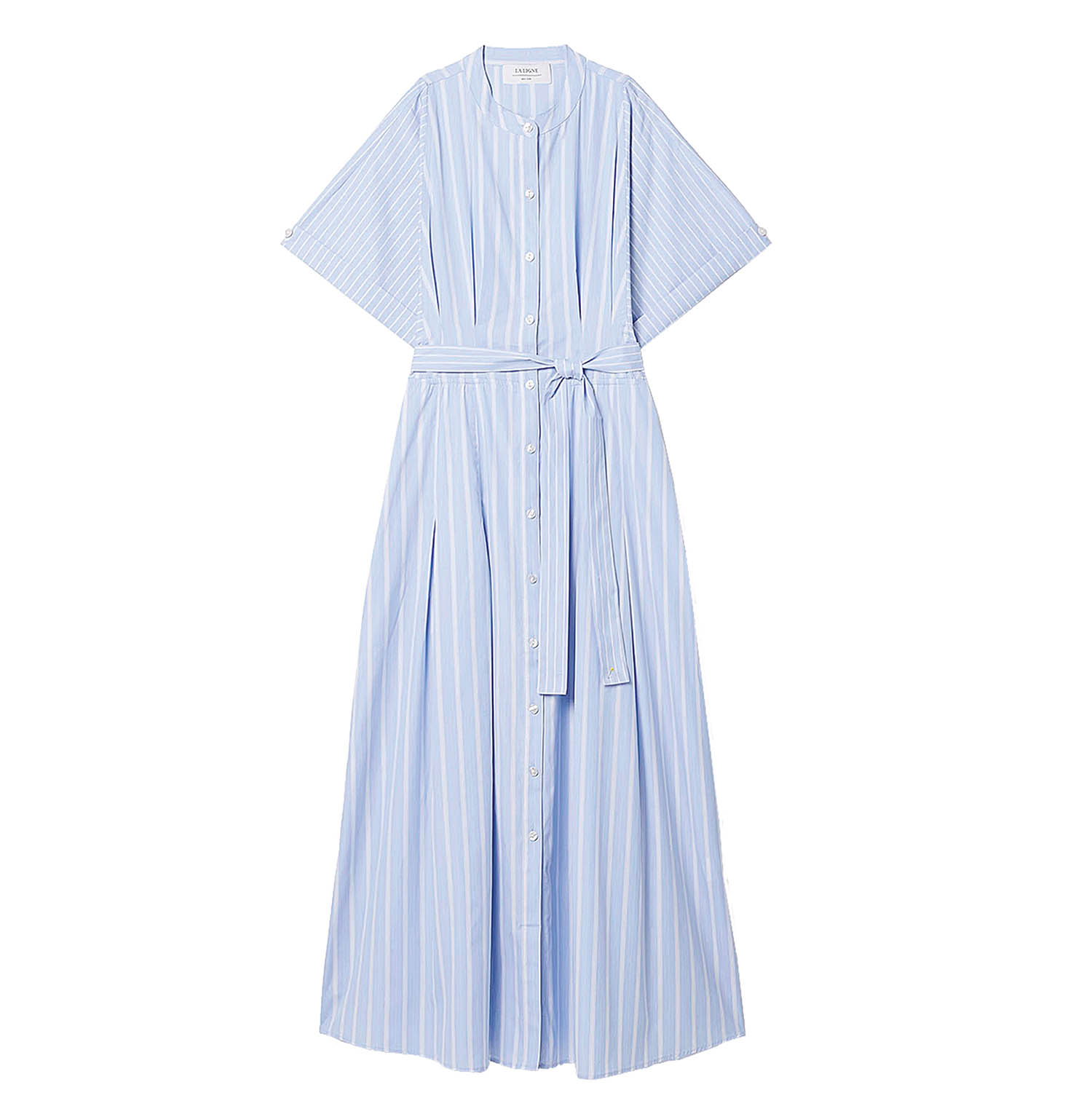
Other perennials include gingham, but this can be tricky for cosplay accusations when worn at primary school pick-up. Smocked, tiered frocks at this point feel a little trite in their ubiquity. The new boho movement seems already slaked off, failing the Glastonbury litmus test, where that cliché 70s-tinted style was dumped for lace-trimmed slips and sportswear.
The look this year is more streamlined, less twee; freshen up with vertically leaning stripes (see Me+Em’s seersucker stripe dress, £275, pictured) and shirt dresses (the ultimate example is by French shirting specialist Sébline at Abask, but Arket also carries a nice one). As ever, a well-chosen dress reassigns itself over time. The faded sundress you bought a few years back can now head to the beach.
Victoria Moss is a fashion writer. She has a Substack newsletter called Everything is Content
38-41. Heat beating hacks
Embrace the power of plants
The stomata in a plant’s leaves are like pores in skin, and they release moisture, providing a cooling effect, both inside and out.
Try a hot brew
Drinking a hot cup of tea can make you cooler in hot weather, because it helps you sweat.
Dress lightweight
A white T-shirt will reflect more of the sun’s rays. But some scientists believe it also reflects your body’s heat back on you, cancelling out the effect. Don’t worry too much about colour; stick to lightweight and breathable fabrics.
Open the right car window
Scientist Hannah Fry recently shared a tip for cooling a car using fluid dynamics. Open a rear window, then rapidly open and close the front door on the opposite side.
42. Keep a cool head (to think more clearly)
Dr Kim Meidenbauer is an assistant professor at Washington State University, and an environmental psychologist and neuroscientist who has spent her career researching how heat affects us. Interview by Matt Alagiah

Q: What happens in the brain when we heat up?
A: First, your body has to thermoregulate, a process directed by the brain’s hypothalamus. It sets in motion a bunch of physiological responses that help you cope with the heat, from sweating to the dilation of the capillaries on the skin. The harder it has to work, the fewer resources you can devote to brain functions that are less necessary for survival, like attention and working memory. All of these are disrupted during heat.
Q: So how might that affect our behaviour?
A: You see changes in people’s ability to concentrate and think clearly; they’re more fatigued; you see impairments in decision-making; and they’re more impulsive and aggressive. You can also see these effects at the population level. There’s been a lot of research into how heat affects violent crime rates, for instance, and it also impacts learning outcomes for kids in schools that don’t have air conditioning. The impact is very real.
Q: Why isn’t this better understood?
A: There was a wave of research on heat and violence in the 70s, 80s and 90s, yet almost all of the work in the past 20 years has been about athletes. But heat affects everyday people too, and not just when they’re in extreme stress. Climate change means this is no longer a niche topic.
43-47. Gather cool items for home
1056 Air Circulator fan £99.99, Meaco
Peppermint foot mist £4.80, Yellow Gorse
Clima insulated bottle £35, 24Bottles
Splatterware wine cooler £65, LampLDN
Mayfair cooling gel pillow £79.99, Luff
48. Escape to an Athens rooftop terrace
By Daphne Karnezis
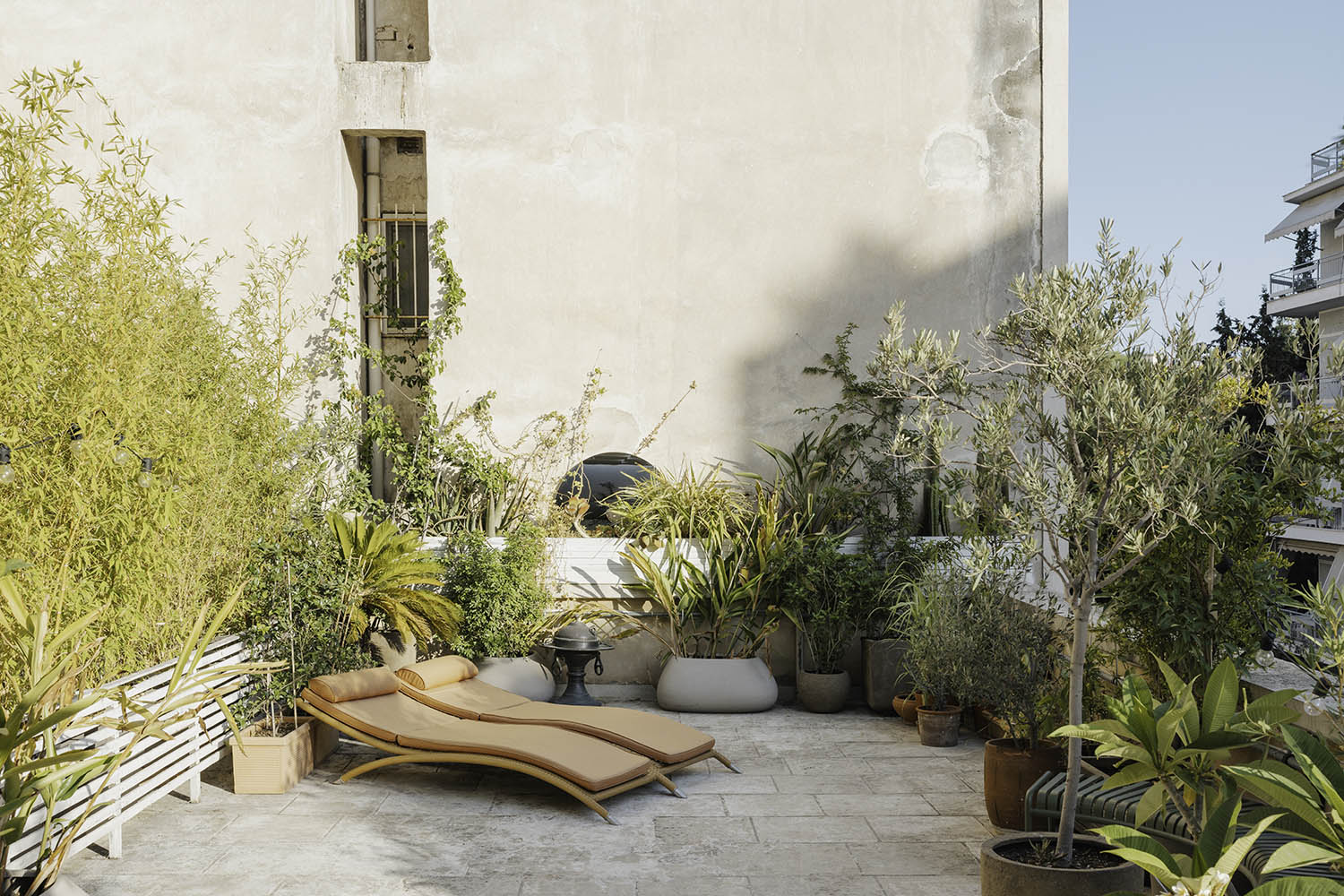
Take it outside: sun loungers on the terrace at Athens travel/design hub Insider Collective
When I moved from London to Athens, our building’s roof terrace became an open-air refuge offering cool air and wide open space. Whenever staying indoors became stifling, I’d grab our rooftop key (every resident is given one) and escape to a gentle breeze.
Buildings in Athens often have flat roofs; these previously unloved spaces have taken on new importance in the past decade and are no longer an architectural afterthought. With ground-level green space limited and streets growing hotter each summer, the rooftop has become a valuable asset for residents, developers, hospitality businesses and policymakers. Small penthouse apartments with direct access to rooftops are now some of the city’s most coveted. Rooftop cinemas, bars, yoga studios and hotel lounges are commonplace.
A new layer of the city – cool, breezy and verdant – has been opened up for good, providing a lesson for other cities where green space and fresh air are increasingly hard to come by.
Daphne Karnezis is a Greek-British journalist and podcast producer
49. Understand the hot flush
Dr Naomi Potter is a doctor and the founder of Menopause Care, a group of clinics across the UK. She co-wrote Menopausing with Davina McCall. Interview by Matt Alagiah
Q: What are hot flushes?
A: The centre in the brain that is responsible for thermoregulation is sensitive to oestrogen. In perimenopause, your hormone levels fluctuate, and then in post-menopause, they’re pretty much absent. Hot flushes are a misfiring of your brain in response to changing hormones.
Q: What advice do you give your patients? And what can others learn from this?
A: You can do things lifestyle-wise to reduce the frequency and severity of hot flushes. There’s medication to help, like HRT. But there can be triggers such as alcohol, smoking and spicy foods. Regular exercise and a well-balanced diet will help, too.
50. Try this public transport tip
By Sarah Manavis
The summer battle against sweat has forced me to develop my own “pre-padding” solution, whereby I discreetly cover key sweat glands with tissues beneath my clothes as I travel.
Paying special attention to your pits and back, place imperceptible layers to absorb the inevitable drip triggered by suffocating buses or a brisk walk.
Once you arrive, sneak into the loo to peel off the tattered remnants and do a dry pat-down with the extra tissue you should, as an insurance policy, also bring with you.
Sarah Manavis writes for The Observer about culture, technology, society and, occasionally, sweat
51. Fill ships with boxes of rocks
As the co-founder and CEO of Seabound, a climate-tech startup, Alisha Fredriksson has developed equipment that captures and recycles the CO2 produced by ships. Interview by Hayley Myers

Q: What inspired you to go into climate tech?
A: In 2018, I read a report clarifying the catastrophic impact of carbon emissions. I’d like to have kids one day, so that really hit home.
Q: Shipping accounts for 3% of CO2 emissions. Why focus there?
A: That is still 1bn tonnes: the same volume that Germany produces.
Q: What does Seabound do?
A: It’s literally a box of rocks! We fill a 20ft container with quicklime pebbles onboard the ship, then connect it to the engine. The exhaust gas passes through and the pebbles absorb and trap the CO2, turning it into limestone.
Q: What happens to the pebbles?
A: We reuse and recycle. For our next project we’re capturing emissions on a ship carrying cement, then selling the limestone to the cement company for their kiln. Our vision is to create circular systems.
Q: Can the industry be turned around?
A: There are 60,000 ships, which are easier to control than, say, billions of people’s consumer behaviour. We can do it and, down the road, could even have carbon-negative shipping.
52-56. Find the perfect straw hat

Scalloped £13.99, New Look (pictured)
Flame £174, Alemais (My Theresa)
Jemima £135, Melissa Odabash
Visor £110 Lack of Color
Ribbon £275, Sensi Studio (Harrods)
57. Seek out a (joyful) public fountain
By Stella Roos
The Romans built fountains to relieve water pressure in the aqueducts, while the English put up theirs to introduce people to drinking water as an alternative to beer. Today, water elements are effective in mitigating heat in cities.
Londoners know this from Granary Square; the redevelopment has brought in shops, restaurants and housing, but the shrewdest decision was to dedicate the entire central square to a fountain. The plaza is fitted with over 1,000 jets that can be programmed to create routes between the water; kids and adults are invited to splash around to their heart’s content.
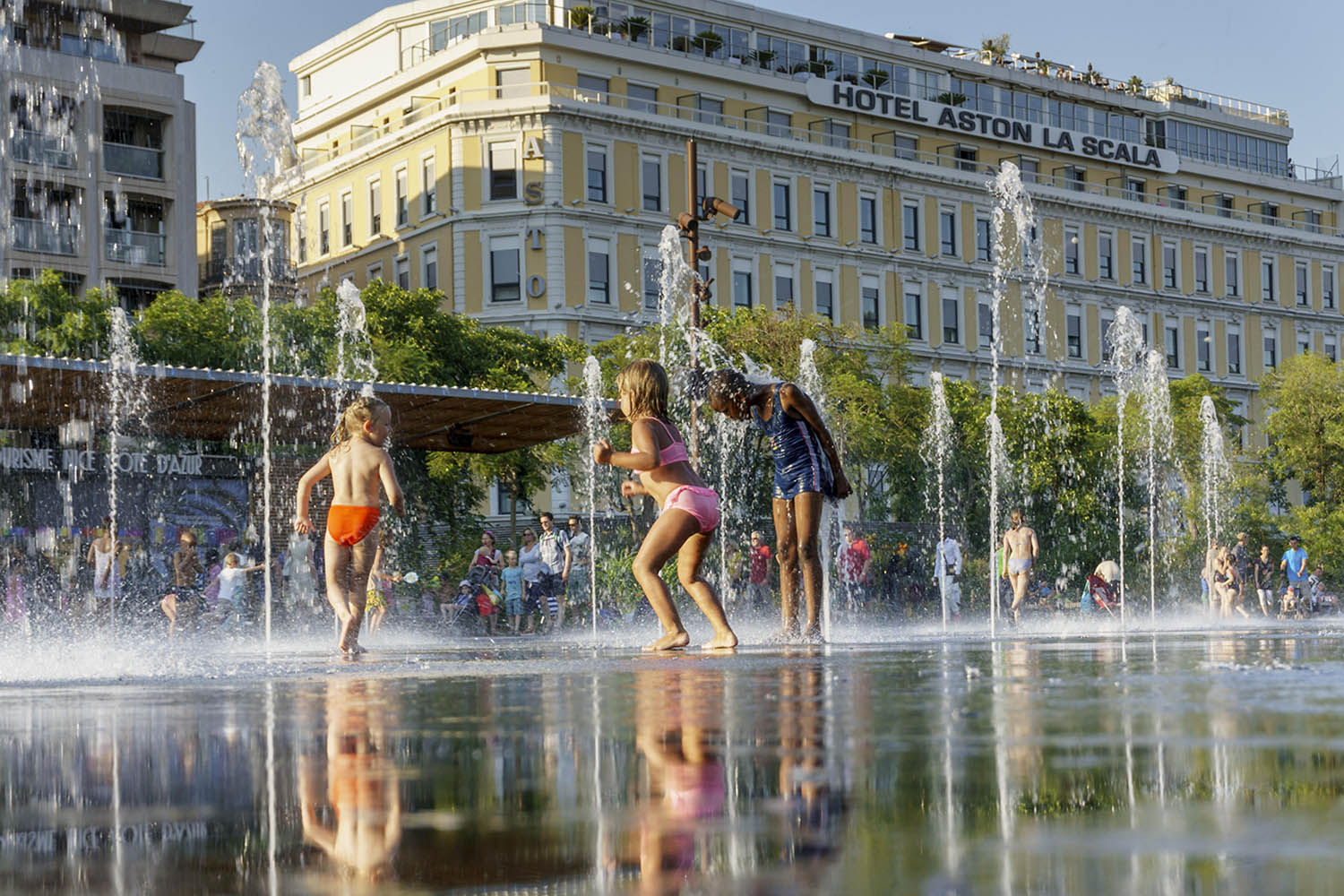
Fountain of youth: the Promenade du Paillon splash pool in Nice
In Nice, part of the city centre’s Promenade du Paillon is a vast, 2cm-deep splash pool, often overrun by children in bathing suits, while keeping clothed passers-by refreshed, too. The re-landscaping of Promenade des Reims features a similar “water mirror” in the shape of a horse-racing track, and won the public vote of the Victoires de Paysage, France’s leading landscaping prize, last year.
In Berlin, new wasserspielplätze (water playgrounds) and planschen (paddling pools) are dotted around the city.Some cities in southern Europe have made building fountains an official priority, as part of their strategies for coping with increasingly frequent heatwaves.
In Logroño, Italian architect Leopold Banchini chose to build a simple structure around an existing fountain. Provided with a changing room, people of all ages immediately changed into bathing suits and started splashing around.
Stella Roos is a Finnish architecture writer living in Berlin and Rome
58-62. Wander in the shade
By Genevieve Fox
When the heat is on in the city, run for cover in your nearest woodland. Then take it slow.
Pick a tree and sit for a while, breathe as you bathe in the forest – a Japanese practice called shinrin-yoku. If there’s a brook, take a paddle, as you can on a walk on the Longshaw Estate, near Sheffield, that takes you past Burbage Brook to Padshaw Gorge, a packhorse bridge beside it.
Or, for the rich pickings of an arboretum, head 20 miles west of Birmingham to Wyre Forest. In Glasgow, the 10-mile Kelvin Walkway, starting on the banks of the River Clyde at the Riverside Museum, links the city’s Clyde Walkway to the West Highland Way.
Cardiff’s Salmon Leaps Walk in the Vale of Glamorgan – the name alone lifts the spirits – is a figure-of-eight walk starting on the city outskirts, passing through woodland to a series of cascades on Wrinstone Brook – though you’ll have to wait until autumn for the salmons’ high jumps.
The one-mile walk between Holkham Beach in North Norfolk and Wells-next-the-Sea has ice-cream spots at either end of a pine-forested trail, and gaps to the beach along the way.
63. Wear summer’s go-to sandal
By Ashley Ogawa Clarke
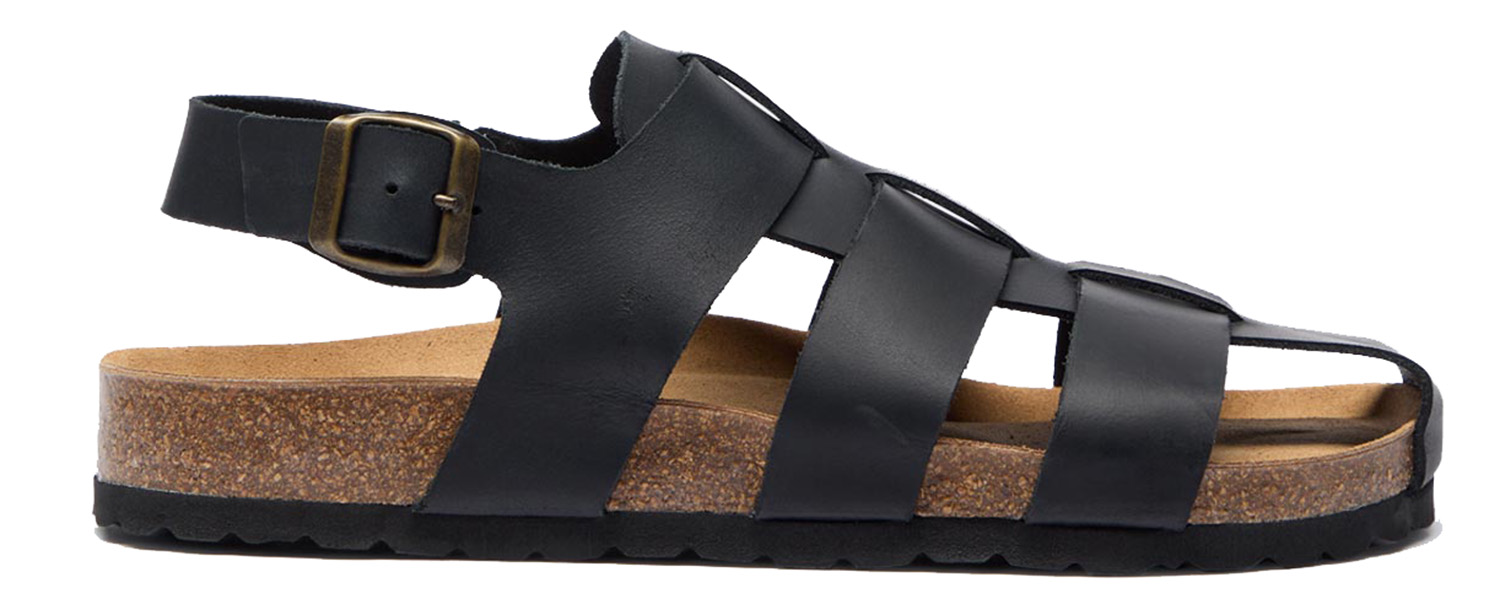
In June, actor Jonathan Bailey drew much attention when he stepped on to the red carpet in flip-flops. They sparked disbelief as to why anybody so famous and handsome would showcase their feet to the world for free. In this economy!
If you have to air out your trotters, there are less divisive and more comfortable ways to do it. A fashion writer’s advice for what Bailey should have worn instead: fisherman sandals.
These latticed, close-toed sandals look more like shoes, and have recently become the menswear shoe of the moment. M&S sells a tasteful-looking pair in black for £45, with straps so wide your feet will be barely visible. Oliver Sweeney’s new Astorga fisherman sandals (£99) is the second-most popular of the British brand’s 174 styles of footwear.Summery enough to blend in at the beach with shorts, but sufficiently smart to wear to dinner under a relaxed pair of cotton or linen trousers… And, as they’re already halfway to shoes, they work with or without socks.
Popular among menswear insiders are Paraboot’s Pacific leather sandals (£275). Originally developed for Carthusian monks in rural France, they’re ideal for summer pilgrimages of all kinds. Red-carpet ready? That too.
Ashley Ogawa Clarke is a British fashion journalist based in Tokyo
64-67. Smart tricks to drop the mercury
Keep air moving
There is a myth that the exertion of using a handheld fan generates more heat than the cooling effect. This isn’t true: fanning yourself really works.
Try a hot-water bottle
A hot-water bottle in bed in winter is commonplace, but we seldom do the reverse in summer. Put a hot-water bottle in the freezer (sounds weird, but it works) and take it to bed.
Pick breathable bedding
Bid farewell to the foam mattress, which is essentially made of plastic, and get yourself one made from breathable materials.
Ice your toes
Nothing beats plunging your feet in a bowl of iced water. You might not have a footbath, but a mixing bowl does the trick.
68. Take the cooking outdoors
Ana Ortiz is the co-director of Fire Made, a studio supplying fire-cookery equipment and workshops. Interview by Hayley Myers
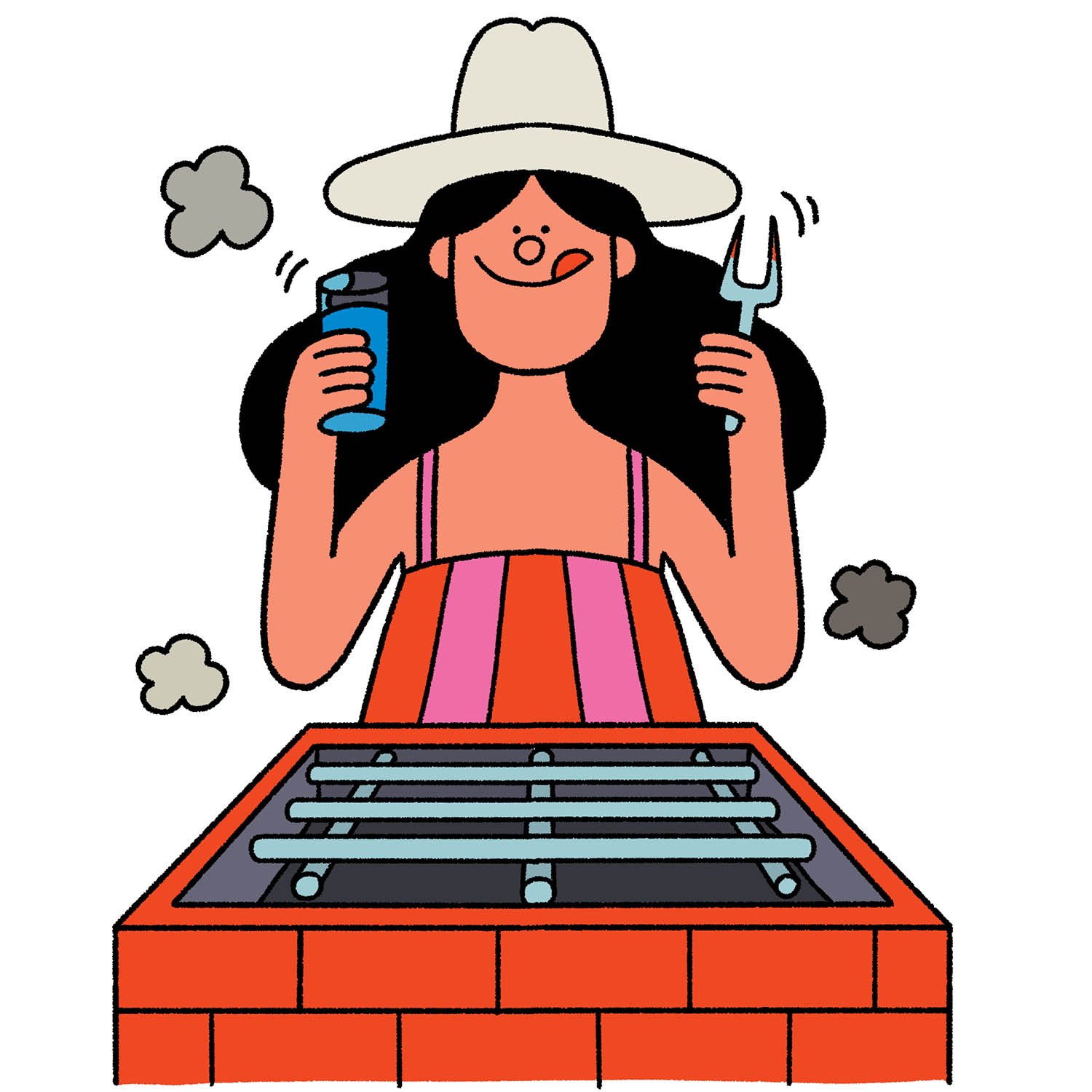
Q: Where does your love of fire cooking come from?
A: I come from a huge foodie family in the Galapagos Islands. Our parties were like mini-festivals; my grandad would kill a pig or a lamb from his farm and cook it whole.
Q: What did you first think of the British BBQ?
A: It was a shock! Sausages, burgers and coleslaw; no homemade marinades, no one interacting with the cook. In South America, the social aspect of fire cooking is important.
Q: What clothes are best for fire cooking?
A: I want to dress in my usual style – a light cotton dress and a Panama hat. Top tip: get a wet cotton towel nice and cold in the fridge, then put it underneath your hat.
Q: Any other tips?
A: I make homemade lemonade, and I freeze cartons of coconut water, which are refreshing when they defrost little by little.
Q: How do you deal with heated chefs?
A: I employ more women! I’ve worked in professional kitchens where I was the only one. When I started running my own kitchen, I made sure that at least 80% of my chefs were female. The difference was unbelievable.
69-73. Meet your fans
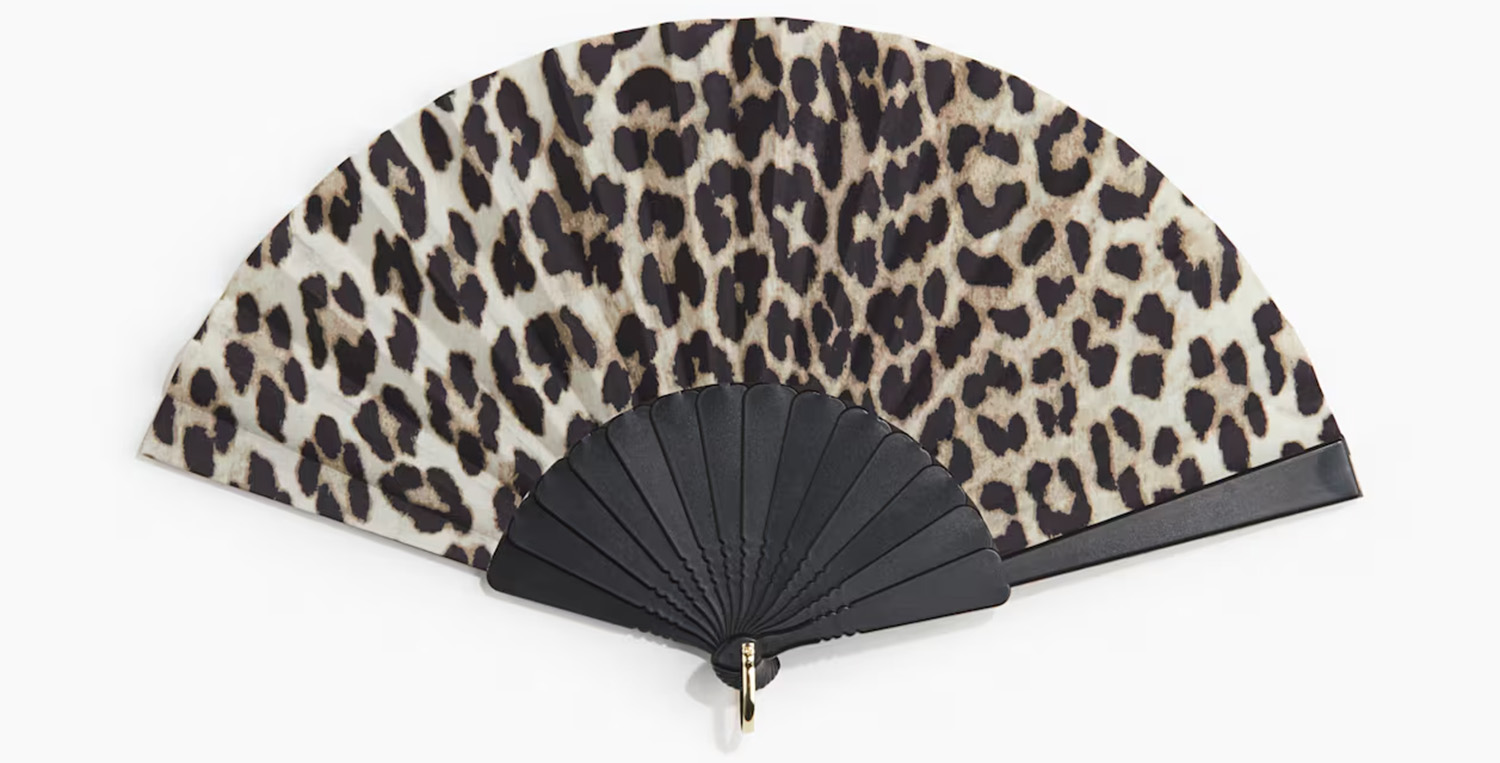
Leopard £6.99, H&M (pictured)
Handheld £12, John Lewis
Print £17.63, AfricanFabs
Neck £30.39, Jisulife (Amazon)
Silk £125, Aspinal of London
74. Keep the computer chips cool
Alex Sharp is the chief operating officer at the Nscale AI data centre in Arctic Glomfjord, Norway. Interview by Lars Bevanger
Q: Why do things get so hot in a data centre?
A: Server racks processing AI data require a massive amount of power. We will soon have 230 racks, each drawing 132 kilowatts –that’s 10,000 kettles turned on at the same time. If we didn’t cool them the ambient temperature in the centre would hit 45C within two minutes. Then, chips can start to degrade and stop working.
Q: How do you keep the temperature down?
A: We pump cold water (average temperature 13C) directly from the nearby Glomfjord into the data centre. Then pipework pumps it in a ring around the entire centre. Smaller pipeworks go to the actual IT racks. There is concern around the amount of water a data centre uses, but a closed-loop system means you don’t have to refill it.
Q: What about the Arctic air around you?
A: We use that, too. About 85% is liquid cooling and 15% air cooling for the less energy-intensive network and storage racks, which means simply blowing cold, Arctic air over them. We also use 100% renewable hydro power from the local power station. Any excess heat we do generate, we pipe off to help heat local businesses.
75-79. Gather gear for the park or garden
Drinks Box cooler £180, Fieldbar
Dog cooling coat £44.99, Pawdaw
Maxi Transat Plus deckchair £89.99, Lafuma
Recycled-wool picnic rug £103, WWF
Stelton EM77 vacuum jug £60.90, Nordic Nest
80. Perfect the art of alfresco eating
By Mina Holland

Behind every good picnic is some good kit. “One of the best purchases in life,” says chef and keen camper Joe Woodhouse, is a Yeti Roadie 24 cool box. “It’s tough, impressively good at what it does and it doubles up as a work surface with a chopping board on top.” Less of an investment but equally handy are stainless steel or enamelware utensils; Ikea, Moonmoon and Elephant Box all have good lines in plates, cups and cutlery, or find an Indian thali plate, in which to serve dips and pickles, crudités and crackers. Food writer Rosie Birkett is a proponent of small, serrated Opinel knives, versatile enough to cut into breads, whole fruit and cheese on the hoof – and is never without a little pot of salt flakes to crunch over ripe tomatoes.
For the food itself, both Birkett and Woodhouse recommend grain-based salads – barley, bulghur, small pasta such as orzo or fregola – because they travel well and, says Woodhouse, “get better sitting around”. Likewise, pulses “hold dressings, absorb flavour and stand up to being in a tub,” says Birkett. Her go-to is a fennel, red onion, flat-leaf parsley, tuna and white bean “situation”. Woodhouse, meanwhile, makes a barley, green bean, cucumber and pickled mushroom number, which he dresses with the pickle and olive brines.
For a more evolved sandwich, Birkett roasts a chicken the day before, then cuts it into chunks. “I like to do an easy, bubbly focaccia,” she says, “and am never without mayonnaise, to which I’ll add herbs – tarragon is lovely.” For dunking, you could elevate supermarket hummus with a swirl of olive oil, harissa or zhoug – invest in some little jars for a toolbox of picnic flavour bombs.
And to drink? Woodhouse recommends a sparkling cider, such as one from Frenchman Cyril Zangs, because it’s “refreshing and not too boozy”. A tip from sommelier Honey Spencer: freeze a bunch of grapes overnight and take these in your cooler for children to pick at, to eat with cheese, or to drop into wine as delicious ice cubes.
Mina Holland is a London-based food writer, editor and author
81-85. Go on a continental getaway
By Genevieve Fox
Lord Byron went to hilltop Sintra to escape the heat. Now it’s your turn for a European tour.
There’s no geographical logic to this one – only the promise of refreshing pit stops. Start in Paris with a stroll and a swim in Parc des Buttes-Chaumont in the 19th arrondissement. It has an (artificial) lake, playground and is set in 25 acres. Now to Milan, which will be toasty, so repair to Lake Como for a drink on the terrace of the Grand Hotel Victoria (pictured, below), which has infinity pools adjoining the lake.

default
On to Madonna di Campiglio in the Brenta Dolomites, a Unesco World Heritage site in Italy’s Trentino region. A ski resort in winter, shaded walks and mountain refuges await in summer. Splash out on an overnight stay at Casa Cook Madonna (casacook.com), a new, adults-only mountain retreat.
It’s Ljubljana next because you’ve heard about the beautiful Logar Valley (Logarska Dolina), 63km north of the Slovenian capital. This Alpine glacial valley is full of waterfalls, a highlight being Rinka – follow the Pot po Logarski Dolini 9km trail up to it and have an al fresco shower.
Finally, take a hike and cool down in an outdoor thermal spa pool in Zakopane in the Tatra mountains south of Krakow. The most romantic of the Polish mountains, Byron would love it here – and so will you.
86-95. Refresh your summer look, chaps

Embroidered shirt £125, Wax London
Stripe linen shirt £75, Cos
Moth Tech T-shirt £120, Satisfy
Airism T-shirt £19.90, Uniqlo
Green linen jacket £143.40, and trousers £83.40, Percival
Swim shorts £29.95, Moss
Karst sandals £64, Camper
Sunglasses £164 Ray-Ban
Cotton-linen shirt £83, Oliver Spencer
96-98. Thrill of the chill
Encourage wind flow
Open your windows at night to let the cool air in and close them in the morning to shut out the rapidly warming air coming from the outside. At the end of the day, enjoy the moment of flinging open your windows to let the cool evening air flood in and start the whole process again.
Freeze everything
Don’t forget that anything and everything can go in the freezer: T-shirts, bedsheets, socks and, yes, even pants, too. We are not here to judge.
Brew at home
It’s easy to make an iced coffee at home and save yourself £4. Make a cafetière the night before, let it cool to room temperature, then put it in the fridge overnight. Add a dash of cream in the morning for a truly decadent morning brew.
99. Use trees (a sweltering city’s secret weapon)
Rachel Malarich is a City Forest Officer in Los Angeles, and a botanist by training. She has sought for decades to increase canopy cover in the city’s low-income districts. Interview by Matt Alagiah

Q: How did you end up in this role?
A: I grew up in a neighbourhood that didn’t have a lot of shade. Other neighbourhoods were lush and green, and I’d ask, “Why isn’t my area like that?” My career has been focused on the idea of tree-canopy equity.
Q: How do trees keep our cities cool?
A: They shade the paved, dark surfaces in our cities that absorb and then radiate heat. The stomata on the undersides of their leaves release moisture day and night, providing a cooling benefit – that’s one reason sitting under a tree is cooler than sitting under a man-made canopy. Trees can also shade buildings and reduce the interior temperature, meaning you use less air conditioning.
Q: What are some of the challenges?
A: We’ve been used to putting in infrastructure that we can walk away from entirely, but trees grow slowly and require us to be thoughtful, to maintain them and not remove them suddenly. Trees are wonderful assets that gain in value.
100. Finish with a chilled dessert: semifreddo
By Mina Holland
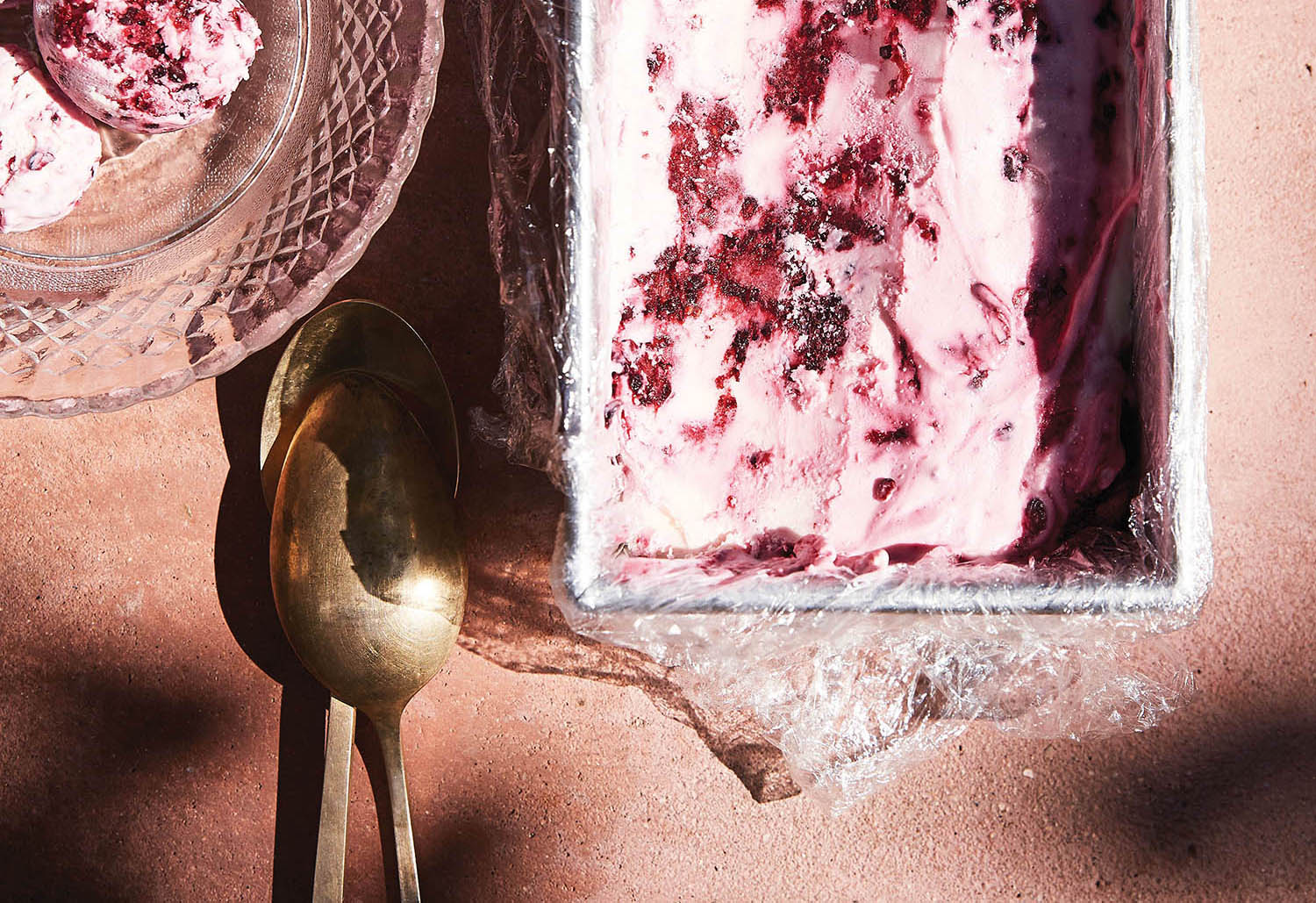
Easy, get-ahead and indisputably delicious, this 70s dinner party favourite is due a comeback. Nigella Lawson once described the semifreddo as her “platonic ideal of ice-cream”, though it isn’t strictly ice-cream – more a velvety, frozen mousse.
Recipes vary, but tend to involve a foamy base of whipped eggs, cream and sugar. In conventional ice-cream, regular churning avoids ice crystals forming, but with semifreddo the airy base mixture gives it a head start, supported by a healthy dose of sugar. No churning also means that semifreddo can be made with lo-fi kitchen equipment. It’s fuss-free and pleasure-rich. A pleasure can come in infinite flavours.
Right now, while Britain’s seasonal fruit offering is at its peak, using fresh berries and cherries seems like a no-brainer, although perennial ingredients are equally refreshing. (Try Ravneet Gill’s mint chocolate chip version.) The pleasing retro aesthetic of sliced semifreddo (by freezing the mousse in a loaf cake tin) is not essential; it is just as comfortable in scoops, such as in Bon Appetit magazine’s raspberry-cardamom yoghurt number.
Editor’s note: our recommendations are chosen independently by our journalists. The Observer may earn a small commission if a reader clicks a link and purchases a recommended product. This revenue helps support Observer journalism.



